

The Classic British Isles Buses Website
 Transport in Albania, page 2, trucks, railways and air (by Dick Gilbert)
Transport in Albania, page 2, trucks, railways and air (by Dick Gilbert)
Last updated 26 August 2024
Email Events diary Past events list Classified adverts Classic U.K. Buses Classic Irish Buses Classic Manx Buses
| Albanian buses | Albanian trucks, trains and planes |
Albania spent many years isolated from most of the world by an oppressive communist regime, but it is now starting to emerge from those days with a new and developing tourist industry and a bid to join the European Union. During the communist era the population were not allowed to own cars (in case they tried to escape in them) so the only motor vehicles were state-operated buses, trucks and other government equipment. This means that, apart from a few former Chinese or Russian agricultural, construction or military vehicles, everything was pretty new.
This page looks at various means of transport I saw around the country. So let's get started with some small stuff, and my thanks to Marin Pazanin from Croatia for help with some of the identification.

First of all, a quick word about Albanian licence plates. The basic elements are AL for Albania (on newer plates), the national symbol of the double-headed eagle (as shown at the top of this page), a two-letter regional identifier (on older plates only) and usually a security hologram between the first letters and the number. Here are some more details:
Top row, left; Older plate with a red stripe. TR = Tirana.
Top row, middle; Even older plate with no coloured stripe. DR = Durres.
Top row, right; Durres (DR) plate with a red stripe. Suffix letter E is later than D.
Bottom row, left; Berat (BR) plate with a red stripe.
Bottom row, middle; New (since 2011) plate with blue stripe and letters starting at AA. Complies with EU regulations.
Bottom row, right; New plate (since 2011) in yellow and red, for taxis.
Apparently 70% of the cars in Albania are second-hand from Germany, and that sounds about right to me: many of the cars I saw for sale on dealer forecourts still had German licence plates. There are many exotic saloons in the capital - Jaguars, BMWs, Mercs etc which was a surprise in a country which is a bit short of cash. But the Albanian mafia is very powerful in European countries so it's quite possible that some of those limos were stolen! A chap in Macedonia told me that there should be a sign at the Albanian Border Post "Welcome to Albania, your car arrived yesterday".
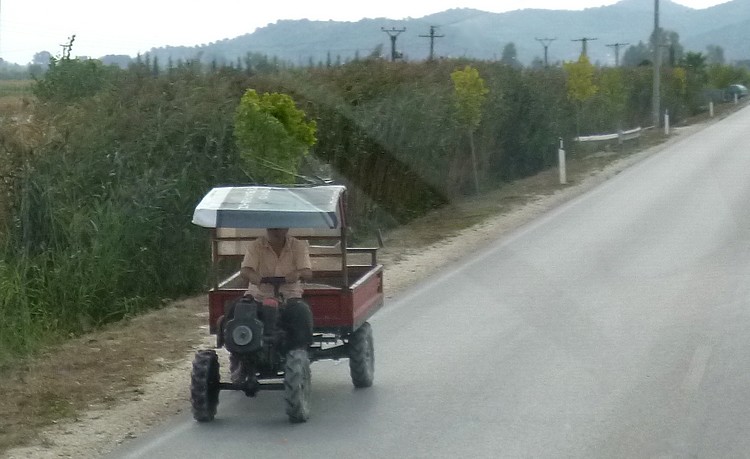
At the lower end of the motorised transport scale is this little agricultural wagon seen near Berat.
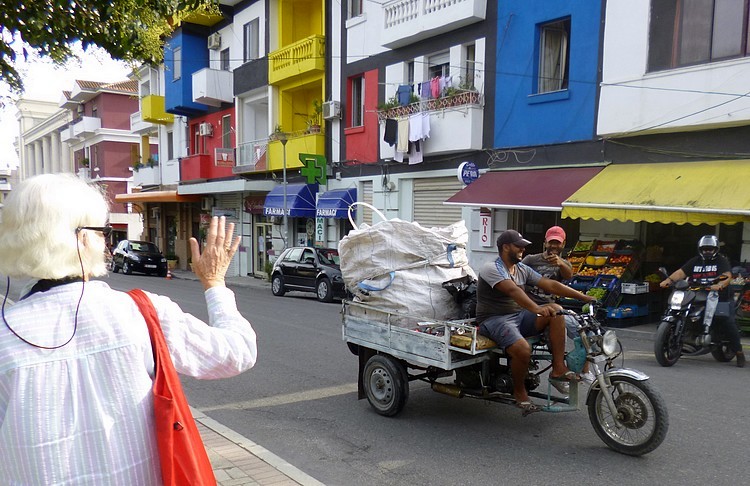
Here's a slightly more sophisticated motor tricycle (what might be called a moto in the Far East) in the coastal resort of Durres. Friendly hand signals between passenger and tourist!
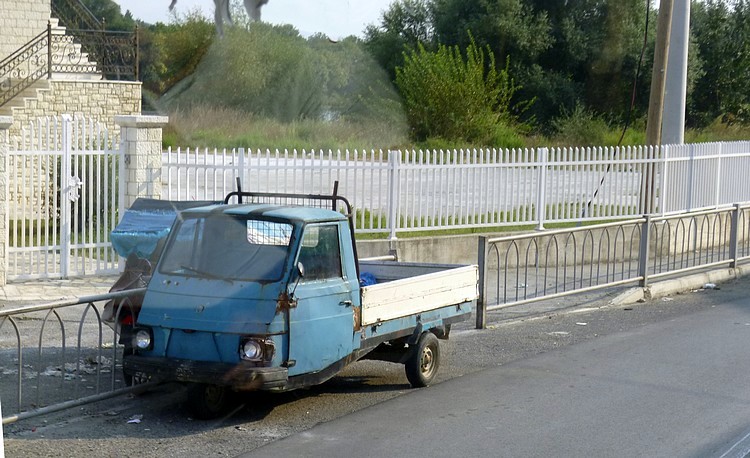
This is a Piaggio Ape P2 from around 1980, seen near Shkodra. Ape is Italian for bee, and the wagon was originally developed from the Vespa scooter (Vespa is Italian for wasp!) They have been in continuous production since 1948 in various models, and this one has a 175cc engine.
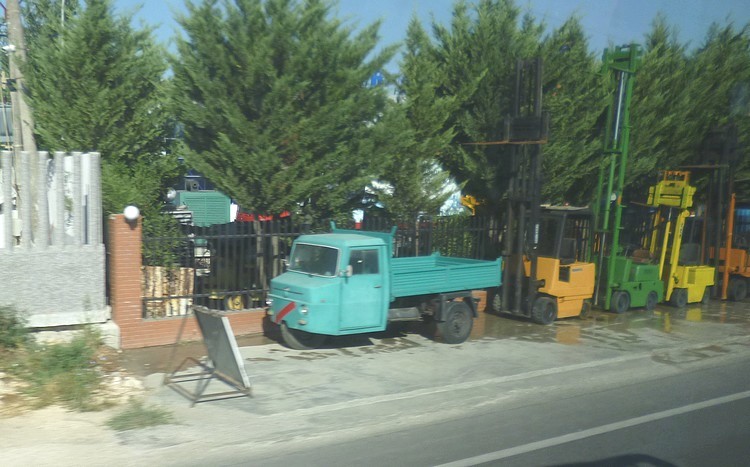
I believe that this is a SAVA P54 Camioneta possibly even dating back to the 1950s, which would make it a very rare beast. SAVA was a Spanish company based in Valladolid. Any of the three-wheeler vehicles shown in these pictures are known locally as a dumdum (pronounced doom-doom).
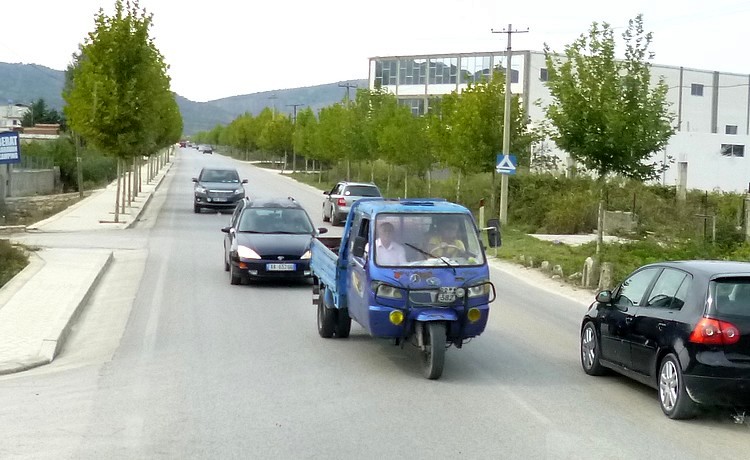
This three-wheeler is fairly modern and probably Chinese - maybe made by Wuzheng (badged as WAW).

This Tirana parks service light truck is definitely Chinese - it's a Dongfeng, probably a DuoLika. Another Chinese light truck that I saw in considerable numbers was KAMA or, to give it its full name, Shandong Kama Automobile Manufacturing Co Ltd.
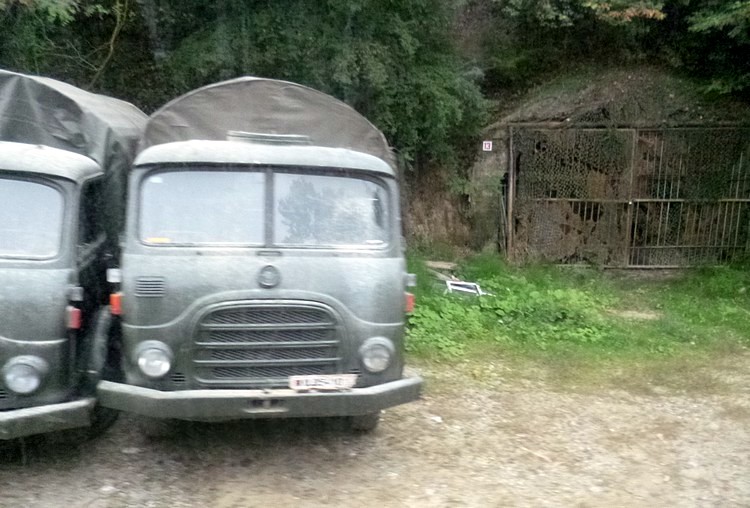
Just outside Tirana is a museum named Bunkart which tells the story of former Albanian dictator Enver Hoxha and what life was like under his repressive communist regime. It is sited in a network of underground bunkers burrowed into a hillside (there are old bunkers EVERYWHERE in Albania!) some of which are still used by the Albanian military. That gate on the right is an entry to one. Several active army vehicles were present close to Bunkart but I was wary of taking obvious photos. However I did capture this image which shows a couple of light army trucks. I had no idea what they were, but my colleague Marin from Croatia told me: "I sent the picture to a friend who said that the trucks are Steyr 680M (if they are 4x4) or Steyr 680M3 {if they are 6x6). They came from Swiss donations (with an Armee Suisse designation LKW Steyr 680G 4x4 3t). So, they are Austrian- built vehicles (Steyr Daimler Puch AG, made from 1960 to 1984) which arrived from Switzerland. Apparently, these were also made by ELBO in Greece, but my friend says that these are Swiss." Many thanks to Marin.
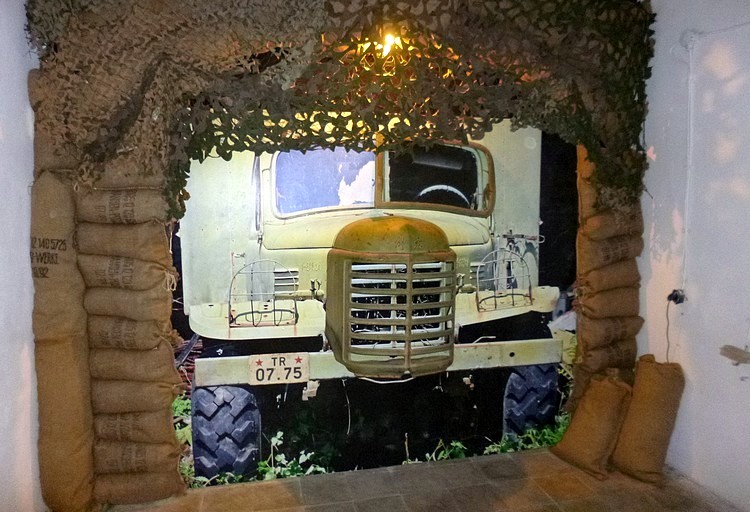
Inside the sprawling bunker complex of the Bunkart museum was this life-size representation of an Albanian Army truck. The bonnet is real, the rest of it is painted on the wall. Here's the story: The design originates from the International KR-11 built in the 1940s for the US Army. Some were supplied to the Russians as part of a lend-lease agreement, and the Russians subsequently started to make them, using the name ZIS-150. From 1950 the program was transferred from Russia to the Chinese who renamed it the Jiefang CA30. (The Russians continued to make the truck, although the manufacturer ZIS was renamed ZIL.) In the 1960s the Chinese started to supply the CA30 trucks to Albania, but the Albanians chose to stay with the old Russian name ZIS. So this is a ZIS. Many remained in service until the 1990s, despite the fuel consumption being around 1 litre per kilometer.
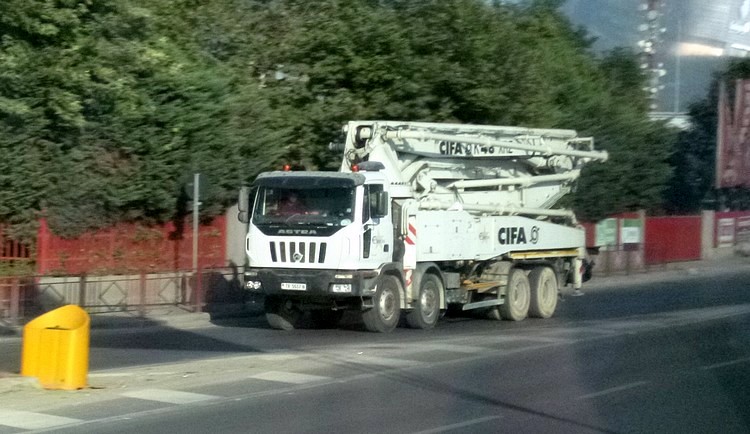
Now we're getting to the bigger end of the scale and I didn't recognise these Astra trucks at all. They were quite common in Albania for heavy duty uses, such as concrete mixers. I'm sure everyone except me knows that Astra is an Italian company formed in the 1930s and taken over by Iveco in 1986. This is an Astra HD9 with a CIFA truck-mounted concrete pump.
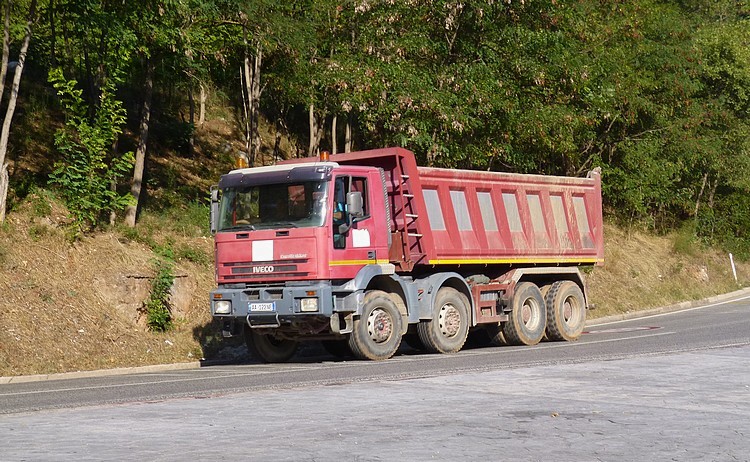
And talking of Iveco, they were probably the most common manufacturer of trucks that I saw in Albania. This is a typical example (a EuroTrakker) on the main road from North Macedonia towards the capital Tirana. Other common trucks included Mercedes, MAN, Volvo and Scania. Not very exotic!

Now a quick look at the Albanian railway system. An active line (passenger and freight) runs all the way down the coast with a branch leading inland to the industrial city of Elbasan. That branch once continued east towards North Macedonia and Lake Ohrid, but it is now disused. There are no working railways running out of the capital Tirana and the station has been demolished, although it is intended to reopen the line from Tirana to the coastal resort of Durres. This is the station in the town of Lezhe (looking north) near the north end of the coastal line, seen from the E762 road. As you can see, the station has seen better days and only the right hand line is still used - the loop on the left is very rusty. Just visible in the background is a tunnel entrance where the line goes underneath the town centre.
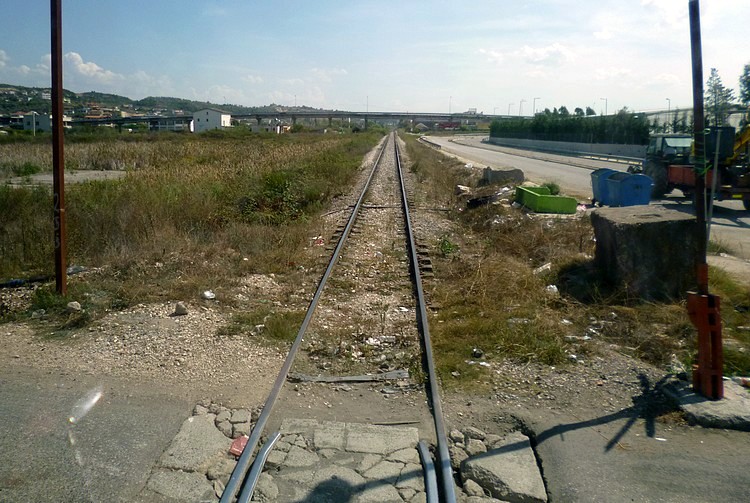
All the lines are single track and standard gauge, operated by Albanian railways (HSH). Passenger trains tend to be short and infrequent. Road crossings are not gated or protected as far as I could see, as shown by this example near Durres, but I believe the speed limit is only 25 mph.
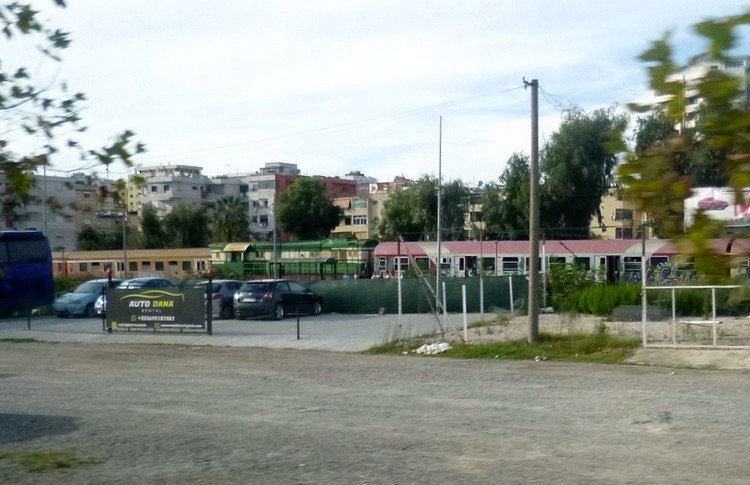
This is a brief glimpse of Durres station. All trains in Albania are hauled by Czech-built CKD diesel- electric T669 locos, 61 of which were acquired in exchange for chrome ore between 1968 and 1990 although very few of them are still operational. Carriages are also in a poor state.

Considered by some to be the most picturesque and spectacular section of the line - from Elbasan east to Pogradec and the North Macedonian border - it is unfortunately now closed due to the poor state of the line and structures. But the main road follows it through the mountains providing a good idea of its original condition. Here are some pictures showing the disused line.
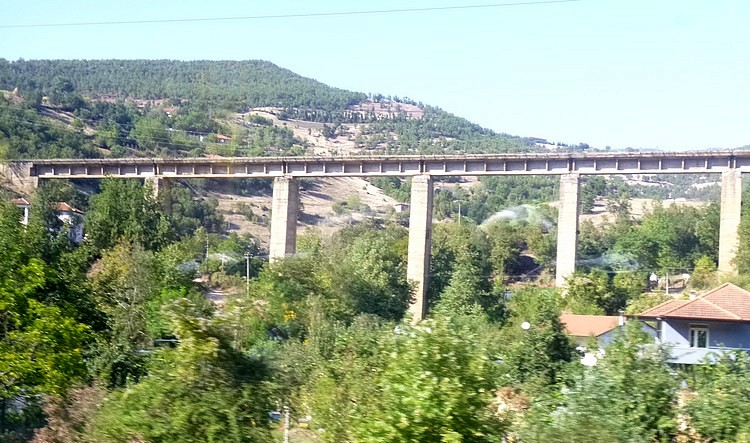
A lot of work must have gone into building the single-track eastbound line from Elbasan, but the bridges and viaducts in particular are looking a bit dangerous in places now.

It was quite clear that no train had been down this way for many years (I noticed a couple of small rockfalls that had covered the line) but it was delightful scenery and must have been a great ride in its day.
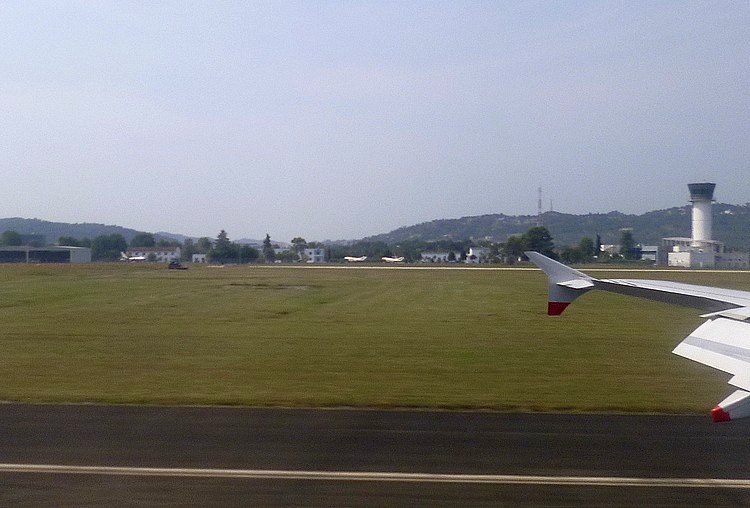
Finally I discovered that there are some real museum pieces lying around from Albania's military aviation past. I know that there are some amazing pictures on the internet of jet fighters abandoned in caves and other delights - well, I didn't see any of that but here's what I did see. Landing at Tirana airport I was already prepared to look out for some relics parked up by the airfield boundary. You'll have to take my word for it that, on the left, is what looks like an Ilyushin IL-28 Beagle bomber, but is in fact a Chinese Harbin H-5. That was a first for me! Meanwhile the two fighters in the centre are not MiG-17s but the Chinese equivalent, the Shenyang F-5. There used to be more of these here, but these last two seem to have been kept on display. Sadly I didn't have the opportunity to get closer.
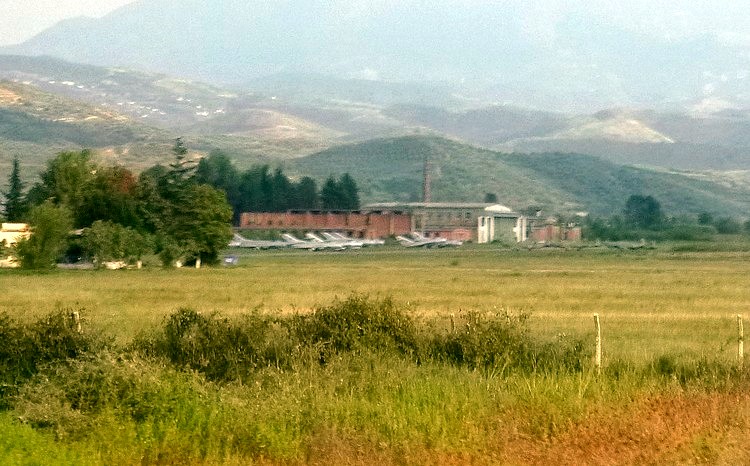
Old Chinese military aircraft are stored (or abandoned) all over the country, but the only other ones I saw were these examples at Kucova Air Base which we passed on our way to Berat. Most of these are the Shenyang F-6 (Chinese equivalent of the MiG-19) but - numbering from the left - the third and sixth (with its nose in the air) are the Shenyang F-5 (Chinese version of the MiG-17). Kucova-based Regiment 1875 used to operate three squadrons of F-5s and F-6s here, along with a military flying school operating MiG-15s. Barely visible in the grass to the right of the hangar are about half a dozen camouflaged Nanchang CJ-6 trainers, a design derived from the Russian Yak-18. Whether these were originally with the local military flying school or came from another base I cannot say. All surviving Albanian Air Force fixed-wing aircraft were withdrawn in 2005. I'd have loved the opportunity to explore these relics more closely, but it wasn't to be...
Email Events diary Past events list Classified adverts Classic U.K. Buses Classic Irish Buses Classic Manx Buses